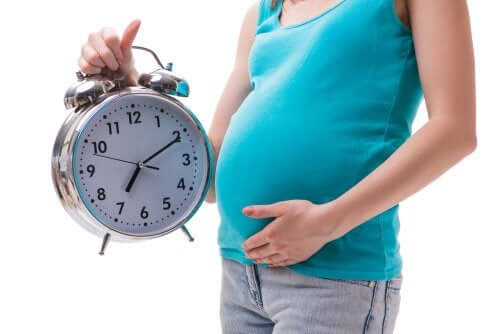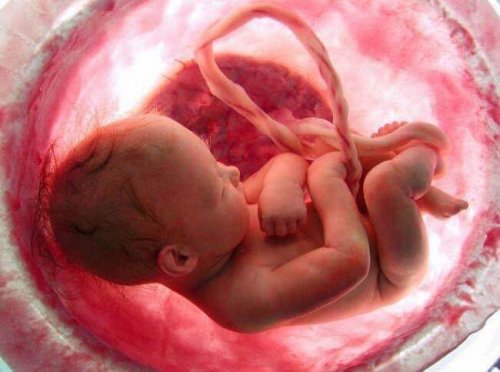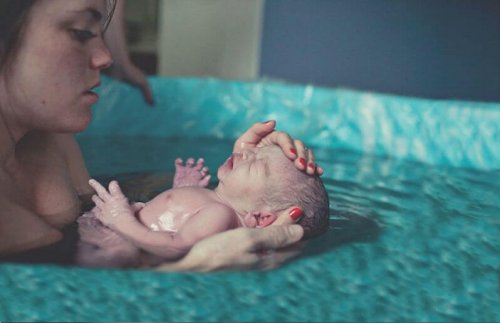Respiratory Distress Syndrome in Newborns

Respiratory Distress Syndrome (RDS) is a respiratory syndrome that usually happens in newborns. It’s triggered by a lack of surfactant in the lungs and the lungs don’t develop entirely. Usually, the surfactant is produced after the 34th week of pregnancy.
What is a surfactant?
A surfactant is a liquid that contains lipids and proteins which helps the air sacs to stay open so you can breathe. Its main goal is reducing the superficial tension and preventing the air sacs from closing when air comes out.
Thus, when the body doesn’t produce surfactant, you need more pressure to open the air sacs after air comes out. This causes the lungs to become swollen and possibly develop pulmonary edema. Blood won’t have enough oxygen and it reduces the available oxygen throughout the body.
RDS is the main cause of respiratory failure in preterm newborns, especially in those born before the 34th week, but the risks are higher with fewer weeks of gestation.

Key risk factors
The main risk factor to develop this syndrome is preterm birth. There are also predisposing conditions to this syndrome, such as:
- Premature rupture of membranes.
- Labor induction.
- Cesarean birth.
- Diabetic mother.
- Severe bleeding during labor.
- Multiple births.
- Meconium-stained amniotic fluid.
Respiratory distress syndrome symptoms
The main symptoms in an infant with RDS are:
- Difficulty to breathe while crying.
- Fast breathing rate.
- Unusual pectoral movements when breathing.
- Nasal flaring.
- Tachycardia.
- Cyanosis, a bluish discoloration of the skin.
If untreated, the potential complications of RDS are:
- Metabolic disorders.
- Pulmonary decline.
- Hypotension.
- Intracranial bleeds.
- Sepsis or infection.
- Pneumothorax: Collapsed lung.

Treatment for respiratory distress syndrome
The classic treatment consists of giving a surfactant to the baby and using mechanical ventilation. Some parents don’t like the second alternative because it requires tracheal intubation.
However, there are non-invasive modalities. The lesser affected infants with a good prognosis, are usually the least premature babies. These may only need to receive oxygen with constant air pressure through the nose.
It’s worth noting that administering synthetic surfactants early lessens the mortality rate and the complications, and the need for mechanical ventilation is low. The most used synthetic surfactants are Beractant, Poractant alfa, Calfactant, and Lucinactant.
With treatment, the prognosis is positive. With ventilation, the lungs start producing surfactants on their own and the process is resolved in a few days.

How to prevent RDS?
When preterm labor is imminent, the mother receives a dose of glucocorticoids, like betamethasone. This helps the fetus’ lungs to grow, producing surfactants.
In fact, before birth, the baby’s lungs can be checked through the amniotic liquid. This helps doctors be prepared and start treating RDS before the baby’s born.
In short, if possible, labor should be delayed until the 39th week of pregnancy, or when the lungs are fully developed. A premature birth always brings more risks that are best to prevent.
Respiratory Distress Syndrome (RDS) is a respiratory syndrome that usually happens in newborns. It’s triggered by a lack of surfactant in the lungs and the lungs don’t develop entirely. Usually, the surfactant is produced after the 34th week of pregnancy.
What is a surfactant?
A surfactant is a liquid that contains lipids and proteins which helps the air sacs to stay open so you can breathe. Its main goal is reducing the superficial tension and preventing the air sacs from closing when air comes out.
Thus, when the body doesn’t produce surfactant, you need more pressure to open the air sacs after air comes out. This causes the lungs to become swollen and possibly develop pulmonary edema. Blood won’t have enough oxygen and it reduces the available oxygen throughout the body.
RDS is the main cause of respiratory failure in preterm newborns, especially in those born before the 34th week, but the risks are higher with fewer weeks of gestation.

Key risk factors
The main risk factor to develop this syndrome is preterm birth. There are also predisposing conditions to this syndrome, such as:
- Premature rupture of membranes.
- Labor induction.
- Cesarean birth.
- Diabetic mother.
- Severe bleeding during labor.
- Multiple births.
- Meconium-stained amniotic fluid.
Respiratory distress syndrome symptoms
The main symptoms in an infant with RDS are:
- Difficulty to breathe while crying.
- Fast breathing rate.
- Unusual pectoral movements when breathing.
- Nasal flaring.
- Tachycardia.
- Cyanosis, a bluish discoloration of the skin.
If untreated, the potential complications of RDS are:
- Metabolic disorders.
- Pulmonary decline.
- Hypotension.
- Intracranial bleeds.
- Sepsis or infection.
- Pneumothorax: Collapsed lung.

Treatment for respiratory distress syndrome
The classic treatment consists of giving a surfactant to the baby and using mechanical ventilation. Some parents don’t like the second alternative because it requires tracheal intubation.
However, there are non-invasive modalities. The lesser affected infants with a good prognosis, are usually the least premature babies. These may only need to receive oxygen with constant air pressure through the nose.
It’s worth noting that administering synthetic surfactants early lessens the mortality rate and the complications, and the need for mechanical ventilation is low. The most used synthetic surfactants are Beractant, Poractant alfa, Calfactant, and Lucinactant.
With treatment, the prognosis is positive. With ventilation, the lungs start producing surfactants on their own and the process is resolved in a few days.

How to prevent RDS?
When preterm labor is imminent, the mother receives a dose of glucocorticoids, like betamethasone. This helps the fetus’ lungs to grow, producing surfactants.
In fact, before birth, the baby’s lungs can be checked through the amniotic liquid. This helps doctors be prepared and start treating RDS before the baby’s born.
In short, if possible, labor should be delayed until the 39th week of pregnancy, or when the lungs are fully developed. A premature birth always brings more risks that are best to prevent.
All cited sources were thoroughly reviewed by our team to ensure their quality, reliability, currency, and validity. The bibliography of this article was considered reliable and of academic or scientific accuracy.
- Fehlmann, E., Tapia, J. L., Fernández, R., Bancalari, A., Fabres, J., D Apremont, I., … & Ceriani Cernadas, J. M. (2010). Impacto del síndrome de dificultad respiratoria en recién nacidos de muy bajo peso de nacimiento: estudio multicéntrico sudamericano. Archivos argentinos de pediatría, 108(5), 393-400.
- Jonguitud-Aguilar, A., & Salazar-Juárez, M. (2007). Los olvidados: epidemiología del paciente prematuro tardío con síndrome de dificultad respiratoria. Perinatología y Reproducción Humana, 21(4), 178-184.
- Morales-Barquet, D. A., Reyna-Ríos, E. R., Cordero-González, G., Arreola-Ramírez, G., Flores-Ortega, J., Valencia-Contreras, C., … & Villegas-Silva, R. (2015). Protocolo clínico de atención en el recién nacido con síndrome de dificultad respiratoria. Perinatología y Reproducción Humana, 29(4), 168-179.
- Castro López, F. W., Labarrere Cruz, Y., González Hernández, G., & Barrios Rentería, Y. (2007). Factores de riesgo del Síndrome Dificultad Respiratoria de origen pulmonar en el recién nacido. Revista Cubana de Enfermería, 23(3), 0-0.
This text is provided for informational purposes only and does not replace consultation with a professional. If in doubt, consult your specialist.








